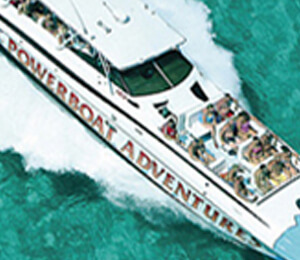A spellbinding tropical paradise, the Bahamas boasts a history rich in intriguing tales, legends and secrets. The islands of this lush archipelago have been home to fascinating characters from peaceful Indians and aggressive Spanish conquistadors to notorious pirates and legendary rum runners.
The Basics
Located southeast of Florida and northeast of Cuba, the more than 700 islands are home to nearly 400,000 people, with about two-thirds living on the island of New Providence, and half the remaining one-third on Grand Bahama. Only about 30 of the islands have any significant population. During high tourist season, numbers swell dramatically, and with an influx of about 1.3 million tourists a year. While the official language is English, other languages include a local Bahamian dialect. The national flower is the yellow elder, the flamingo is the national bird and the national fish is the blue marlin.
Dramatic Caves
The Bahamas boast an extraordinary numbers of caves, both on land and underwater. Hundreds of horizontal and vertical caves were carved out by acid rain in the ice ages when the sea level was much lower. Soaring caverns, winding passages and hidden grottos were perfect for hiding treasure, and Bahamian history is loaded with swashbuckling pirates. Submarine caves, or blue holes, are abundant in the islands, and Dean’s Blue Hole on Long Island is the deepest blue hole in the world. At a depth of over 200 meters, the site is popular with free-divers trying to break the world record.
Naval Hammocks
The Lucayan Indians who greeted Columbus when he arrived on what is now San Salvador island made a long-lasting contribution to the comfort,safety and health of seafaring men around the world when they taught the Spanish sailors how to make hammocks from thick cotton cloth. Prior to this, sailors slept on the decks of the ship, often in damp, squalid conditions conducive to disease and discomfort. Because hammocks moved with the ship, they were safer than bunks, from which sailors could be pitched in rough seas.
Wreckers
After the British first claimed the Bahamas in 1679, several lords were granted proprietary rights to the islands, and unfortunately the appointed governors of Nassau had little regard for principle or law. Many residents found that salvaging ships wrecked in the tricky Bahamian waters was a lucrative means of earning a living, and it was a short step to wrecking itself, the practice of deliberately misplacing lights and luring ships to a deadly fate on dangerous reefs. Treasure-laden ships from many European countries were lured onto the rocks for their cargo of gold and other precious commodities. Ironically, the pirates’ rule was ended around 1718 by Royal Governor Woodes Rogers, himself a reformed pirate.
Pirates
In the 1600s, much of the Caribbean was a pirate refuge, and Nassau was home to such notorious brigands as Edward Teach (Blackbeard) and the infamous female pirates Anne Bonney and Mary Read. At that time, an act of piracy was legal if it was against the ship of a hostile nation, among which were the Spanish, whose ships were rich in precious cargos.
This background of secrets and fun facts just adds to the list of great things to do in the Bahamas.
